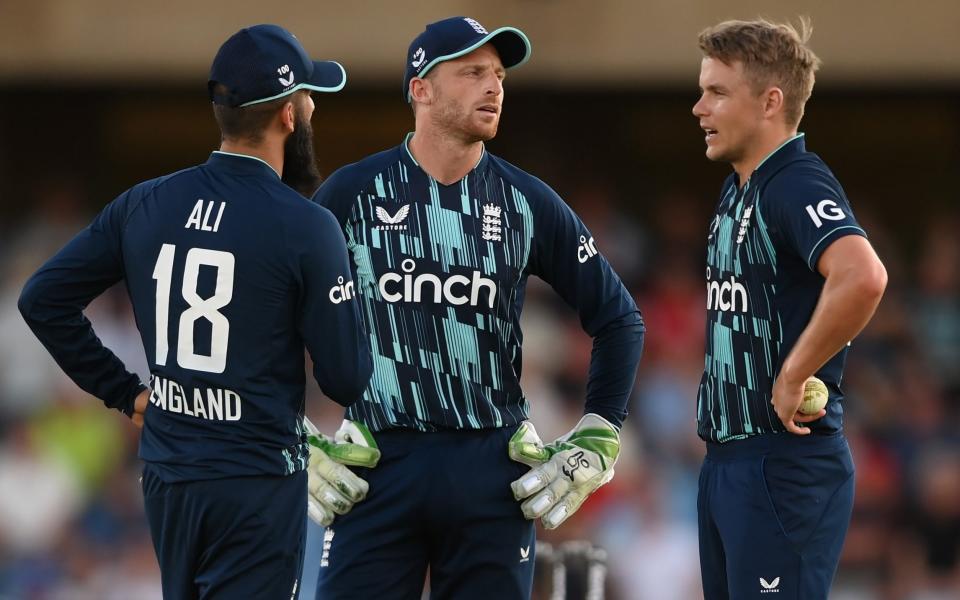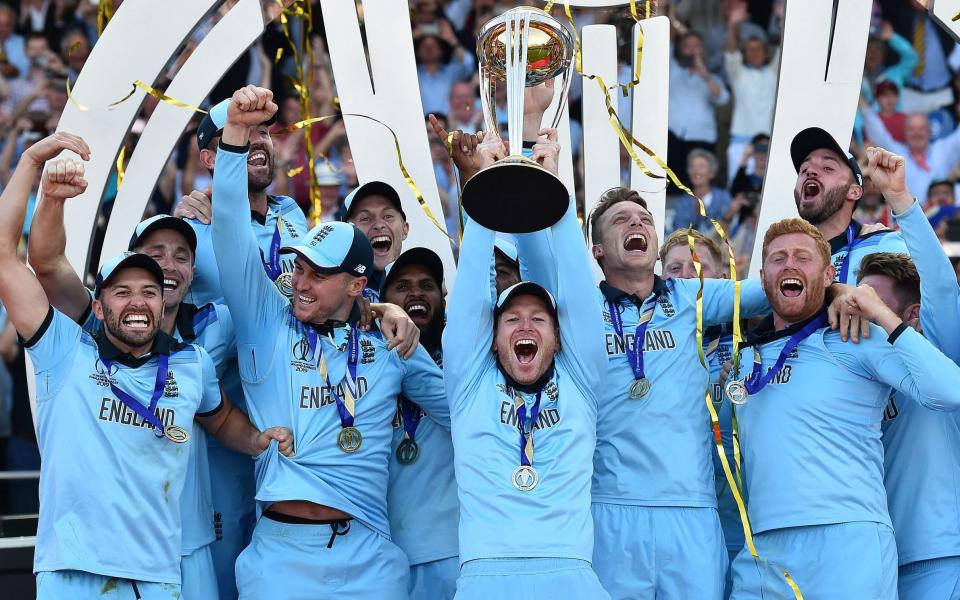
With England’s World Cup defence now just eight months and 10 matches away, Jos Buttler’s team is running out of time to find the winning formula.
Schedule clashes and injury for the tour of Bangladesh next month mean they will only have their strongest team for a maximum of seven of those games, against New Zealand and Ireland in September, before the tournament. And some of those fixtures are likely to come after England have had to name their 15-man squad.
Buttler felt that, even though the series was lost, the picture became clearer across three matches in South Africa. Jofra Archer returned, Olly Stone staked a claim, Jason Roy kept himself in the hunt, Dawid Malan underlined his class and Moeen Ali’s batting returned to form. Most importantly, Buttler’s batting was sensational.
But how many of the 15 places are, barring injury, absolutely nailed on? Buttler, Joe Root, Jonny Bairstow, Archer, Mark Wood, Adil Rashid and Sam Curran seem certain. Moeen and Chris Woakes’s experience leaves them close, as does Harry Brook’s all-format class.
This situation sits in stark contrast to 2019. Then, the team that played England’s first ODI of the year had just one change by the World Cup final (Moeen out, Archer in). Archer’s arrival had been forecast by then, and the race was on among the seamers to stay in contention; eventually, David Willey missed out. There was time for one late surprise, with Alex Hales’s drugs ban seeing him dropped.

In fact, the two cycles have been polar opposites. After another desperate World Cup campaign in 2015, England simply started again. They chose a group of players, and invested in them. Those players were largely the same as those that made the World Cup final: nine of the final XI played in the “ground zero” series against New Zealand in 2015.
England’s consistency of selection across those four years was remarkable. Between World Cups, they played 88 ODIs, and won 58 of them. They used just 34 players in that time (two of them, Tim Bresnan and Zafar Ansari, appeared only in a washed-out ODI in Dublin before the new management, Trevor Bayliss and Paul Farbrace, had been appointed). Of the other 32, 13 played more than 40 of the remaining 87 matches, and 12 played fewer than 10.
A shifting landscape
England’s consistency of selection across those four years was remarkable. Between World Cups, they played 88 ODIs, and won 58 of them. They used just 34 players in that time (two of them, Tim Bresnan and Zafar Ansari, appeared only in a washed-out ODI in Dublin before the new management, Trevor Bayliss and Paul Farbrace, had been appointed). Of the other 32, 13 played more than 40 of the remaining 87 matches, and 12 played fewer than 10.
Since the 2019 final, it has been very different, mainly because of changes to the game at large. The International Cricket Council brought in the ODI Super League for qualification for the World Cup (they have since scrapped it for the next cycle), which saw the series reduced to three matches. From 2015-19, England played 12 five-match series and another of four. This time, every series has been three matches long.
So, since the 2019 World Cup, England have played just 33 ODIs. But the game has changed in other ways too, with Covid-19 leading to greater splits in squads (notably when England had to find a whole new squad to face Pakistan in 2021 – and won 3-0). They have already used 37, more than in 88 matches in the previous cycle, and debuts could follow for Rehan Ahmed and Tom Abell in Bangladesh. By the time they reached the World Cup, they would have played 43 matches, half as many as the previous cycle (which was not abnormally congested; between the 2011 and 2015 World Cups, England played 82).
If you thought reducing ODI series from five to three matches would free up space in the schedule, think again. England have played more T20s in that time, and franchise tournaments have popped out of the ground as regularly as in a game of whac-a-mole.
The changes in the game’s layout were plain to see at the end of this series, when no player went home. Three went to New Zealand for a Test series, three went to the UAE for a franchise competition, and the other eight stayed in South Africa for another. The scheduling clashes continue in Bangladesh, but all this was partly in England’s gift. In 2020, the players pulled out of a series in South Africa, rescheduled until now, and in 2021, the board “mutually” postponed the Bangladesh tour.

Perhaps, in England’s approach, there has been a bit of complacency since 2019, too. Only Liam Plunkett was moved on immediately, with Eoin Morgan and Ben Stokes following since. Otherwise, a golden generation of players (all of whom except Archer are now well into their thirties) were backed to make it to the next World Cup. Only Curran, who actually debuted in 2018, has really made a place his own since, and that is largely on the back of T20 performance.
The changes to the cricketing landscape have discombobulated these players in ODI cricket. There is no domestic competition to locate form, as there was until 2019, and a diet of T20 is not easy for refinding form. Roy, Moeen and Buttler have all spoken about those struggles in South Africa, and the captain is looking to encourage open dialogue in the group about tactics and timings in 50-over cricket.
Buttler’s innings in Kimberley, coming in at 14 for three and sharing 232 with Malan was a case in point.
“After a win like that, it’s a great time to remind people of the way 50-over cricket can work,” he said. “It’s a great example for guys watching that haven’t played a lot of cricket, that this still happens in 50-over cricket, it’s not all just an elongated T20.
“It’s been a really beneficial series. We have a clear direction of where we’re going, reconnecting with how we’re going to get there, the way we want to play.
Another difference with 2015-19 is that England were building towards a home tournament, so 47 of those 88 fixtures happened at home. They knew ODI cricket in England inside out. This time, preparation for India, in Asia, has been limited, which makes Bangladesh an important tour.
This has been a chaotic cycle and, as it nears its end, England have plenty of places to play for.
Article courtesy of
Source link